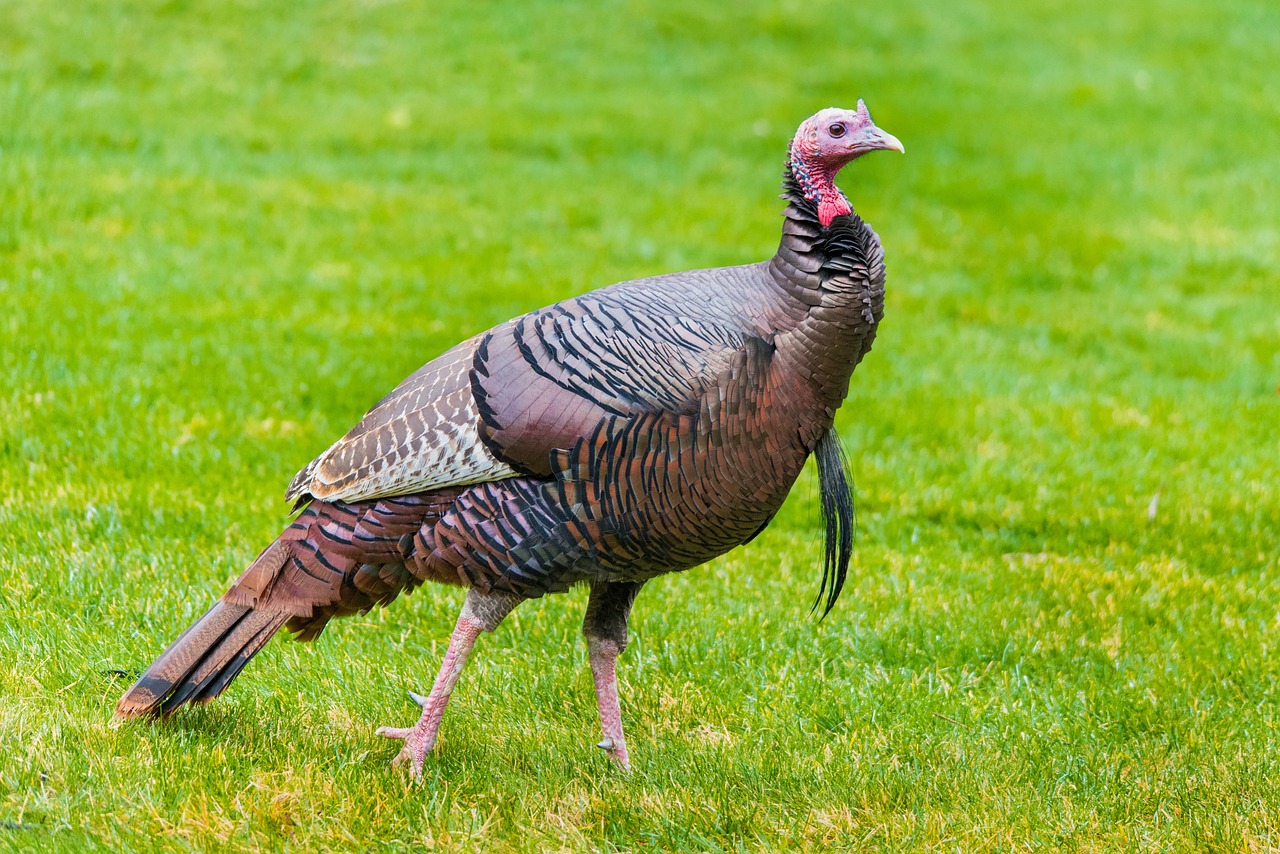Species Overview and Habitat
Wild Turkeys, scientifically known as Meleagris gallopavo, are native to North America and exhibit a diverse range of subspecies adapted to various environments. Their habitats span forests, fields, and grasslands, making them a versatile species commonly found in the United States, Canada, and Mexico.
Taxonomy and Subspecies
The Wild Turkey belongs to the order Galliformes and is classified into six recognized subspecies. Key subspecies include the Eastern Wild Turkey (M. g. silvestris), found in the eastern United States, and the Merriam’s Turkey (M. g. merriami), native to the western United States. Other subspecies include the Osceola Turkey (M. g. osceola) in Florida, the Rio Grande Turkey (M. g. intermedia) found in the central plains, and the Gould’s Turkey (M. g. mexicana) in the southwest. Each subspecies exhibits unique physical traits and behavior, adapted to their specific habitats.
Natural Habitats
Wild Turkeys thrive in various natural habitats, with preferences for open woodlands, mixed forests, and grasslands. They typically inhabit areas with a combination of trees and open fields that provide shelter and food. Pine forests and oak woodlands are particularly favorable due to abundant food sources such as nuts, seeds, and berries.
Habitat loss poses significant threats to their populations, making conservation efforts vital. In North America, initiatives are in place to restore and protect habitats, ensuring the long-term survival of Wild Turkey populations. Organizations like the Cornell Lab of Ornithology and eBird monitor turkey populations to aid in conservation strategies.
Physical Characteristics and Behavior
Wild turkeys exhibit distinct physical traits and complex behaviors that play vital roles in their survival and social interactions. Key characteristics include their striking appearance and unique communication methods.
Identifying Features
Wild turkeys possess several identifying traits. Their feathers display a rich variety of colors, including shades of bronze, red, white, and blue. Males, known as toms, are larger than females (hens) and can weigh from 11 to 24 pounds.
The head is bare, featuring caruncles in various colors like red, blue, and purple. Snood and wattles extend from the head and throat, respectively. Their beak is short and stout, suited for foraging.
Tail feathers are long and fan-shaped, essential during courtship displays. Male turkeys sport a distinctive beard, which may grow up to 12 inches long, adding to their unique appearance.
Turkey Behavior and Communication
Wild turkeys display intriguing behavior patterns, particularly in social structures and communication. Pecking orders dictate their hierarchy, influencing access to food and mates.
They are primarily foragers, consuming a diet of plants, snails, and even salamanders. Communication is vital; turkeys produce different sounds like gobbling, clucking, and purring. The gobble is typically performed by males during mating displays.
During courtship, males engage in strutting—a dance showcasing their colorful plumage and impressive size. This behavior is crucial for attracting females. Their keen eyesight allows them to detect movements quickly, aiding in survival from predators.
Diet, Reproduction, and Lifecycle
Wild turkeys exhibit diverse eating habits and unique breeding behaviors. Their lifecycle involves distinct stages from egg to adulthood, with specific needs at each phase.
Foraging and Diet
Wild turkeys primarily forage on the ground, consuming a varied diet. Key food sources include seeds, fruits, nuts, and insects. Acorns are particularly favored in fall and winter, while sedges and berries are more prevalent in warmer months.
During spring, turkeys might also eat tender green plants and flowers. This varied diet supports their nutritional needs throughout the year, allowing them to thrive in diverse habitats. Turkeys do not migrate long distances but may cover significant ground in search of food.
Breeding Habits and Courtship
The breeding season for wild turkeys typically occurs between February and June. Males, known as toms, engage in elaborate courtship displays. This includes gobbling, puffing out their feathers, and strutting to attract females.
Females, or hens, assess the suitability of potential mates based on these displays. After mating, hens select secure nesting sites on the ground, usually hidden among dense vegetation to protect their eggs from predators.
Lifecycle and Development
The average clutch size for a wild turkey is about 10 to 15 eggs. Hens incubate the eggs for approximately 28 days. Once hatched, chicks are precocial, meaning they can walk and forage for food almost immediately.
Initially, they rely on their mother for protection and guidance. As they grow, they develop adult plumage and learn foraging skills from their mother. By the time they are 4 to 5 months old, young turkeys are largely independent, although they may stay with their mother during the winter months.
Image by Mohan Nannapaneni from PixabayShare this content:

Post Comment
You must be logged in to post a comment.